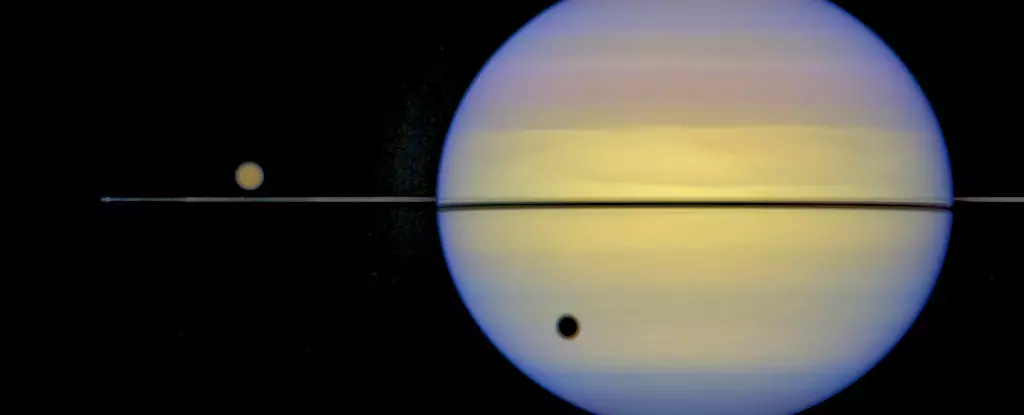The hopes of discovering extraterrestrial life within our Solar System have taken a hit with new research suggesting that Saturn’s largest moon, Titan, may be barren. Catherine Neish, an astrobiologist from the University of Western Ontario, has expressed disappointment in the findings. This setback has led scientists to reevaluate their optimism regarding the possibility of finding lifeforms in the icy worlds of our Solar System.
Titan, one of the few celestial bodies in our Solar System with continuous liquid water, has been a potential candidate for hosting some form of biochemistry. However, the latest research indicates that the existence of water alone is not sufficient to support life. While Titan’s atmosphere is rich in organic molecules, the flow of these molecules through the moon’s environments, particularly into its underground liquid layer, presents a significant challenge.
Neish and her team have estimated the transfer of organic molecules through impact craters on Titan, with the conclusion that the rate of carbon-based molecules reaching the moon’s ocean is insufficient to sustain life. The lack of a free-flowing carbon cycle on Titan hinders the possibility of life arising in its subterranean oceans. This finding underscores the importance of elements other than water, such as carbon, in the formation of living chemistry.
The disappointing results from the study on Titan have implications for the broader field of astrobiology. While Titan was once considered a promising candidate for finding life due to its organic-rich atmosphere, the lack of a viable carbon cycle raises doubts about the moon’s habitability. This research highlights the challenges of sourcing essential elements for life in extraterrestrial environments and underscores the complexity of the conditions necessary for life to arise.
Despite the disappointing conclusion regarding the potential for life on Titan, there remains value in studying this enigmatic moon. Titan’s surface composition provides a unique opportunity to investigate organic chemistry in a complex environment. The insights gained from studying Titan’s surface could offer valuable information about the Universe and the potential for life on other planets.
Neish is involved in NASA’s Dragonfly project, which aims to land a drone on Titan’s surface in 2028. This ambitious mission seeks to gather samples from Titan’s surface to analyze its composition and potentially uncover evidence of prebiotic reactions. By exploring regions where water and organics have mixed, scientists hope to gain a better understanding of how life may emerge on different planets.
While the findings regarding Titan’s potential for sustaining life may be disappointing, the research contributes valuable insights to the field of astrobiology. By exploring the challenges of sourcing essential elements for life in extraterrestrial environments, scientists are gaining a deeper understanding of the conditions necessary for life to exist beyond Earth. The study of Titan’s unique environment continues to be a valuable endeavor in advancing our knowledge of the Universe and the potential for life elsewhere.


Leave a Reply